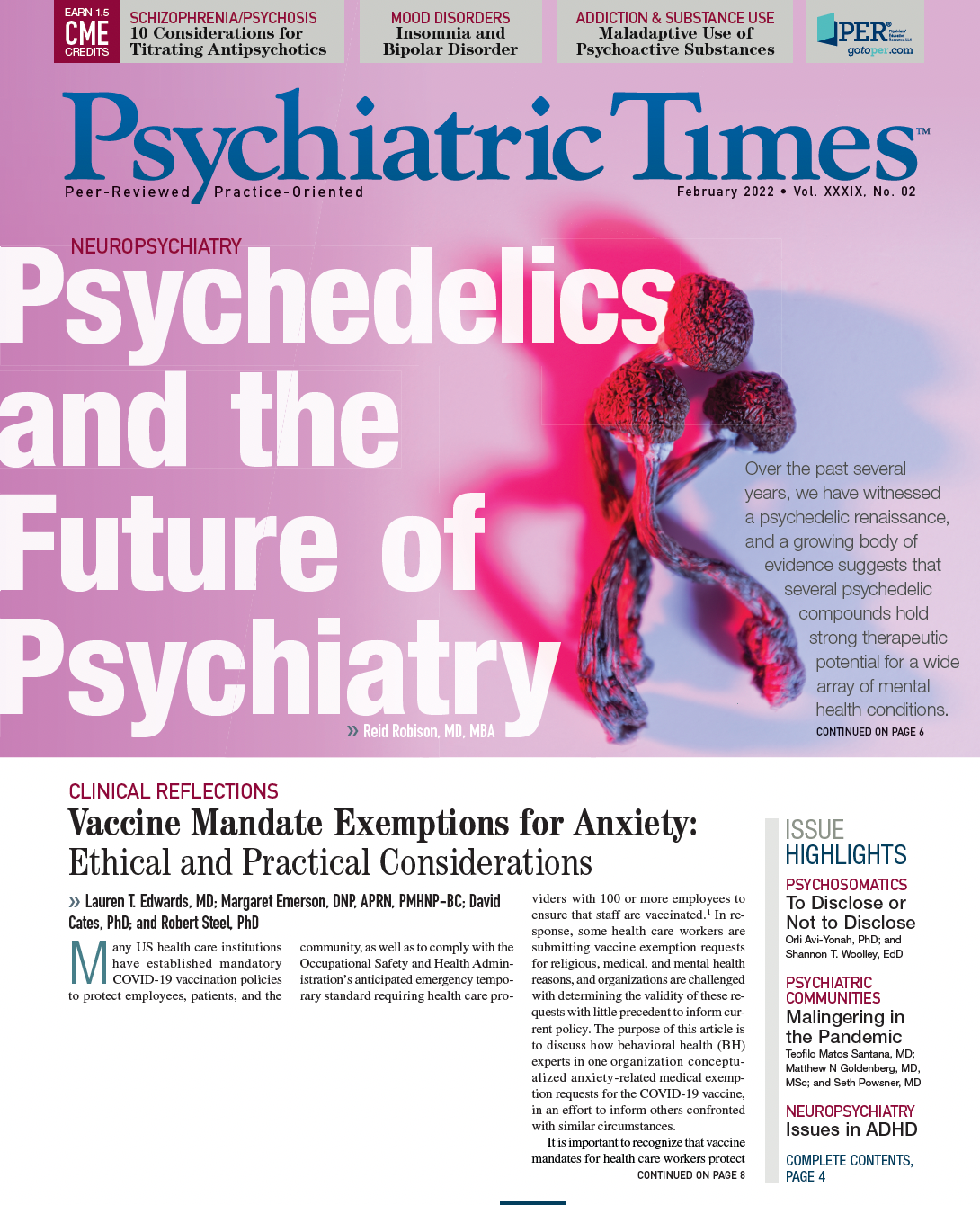Publication
Article
Psychiatric Times
A Simple Concept With Complex Implications
Author(s):
Comorbidity: The concept is simple enough, but in practice, comorbidity drives complexity and presents the specters of diagnostic ambiguity and therapeutic unpredictability.
Leigh Prather/AdobeStock

SPECIAL REPORT: COMORBIDITIES
Comorbidity: The concept is simple enough, but in practice, comorbidity drives complexity and presents the specters of diagnostic ambiguity and therapeutic unpredictability.1 The psychiatric community maintains a healthy fascination with symptom associations and relationships between diseases and conditions, both medical and psychiatric. In many ways, attention to these relationships and understanding how they affect disease trajectory and therapeutic effectiveness, for example, get to the heart of psychiatry and the human need to interpret reality for ourselves and others.
Reality must be described before it can be interpreted. Philosophical and medical efforts from the phenomenology of Karl Jaspers, MD, and Edmund Husserl, PhD, and the descriptive psychopathology of the DSM display the long-standing imperative to accurately describe and understand reality for patients, caregivers, and other clinicians.2 The comingling of comorbidities provides an enriching, descriptive sketch that should balance clinicians’ understanding of patients’ symptoms, conditions, vulnerabilities, and protective factors.
Mimesis: imitation, representation, expression, the act of resembling. Getting reality right has been the domain of not only a good psychiatric interview but art and literature since antiquity.3 Mimesis refers to the depiction of nature—its accuracy and reflection, which may provide additional perspective on reality as it exists. The aesthetic imperative to reflect reality can be traced back to Aristotle and Plato. The Aristotelean Poetics is essentially a treatise on mimesis and the poetic form to depict human nature as it is experienced.4
Beginning with infancy, human nature is primed for mimicry. For the infant, it is integral for growth, understanding, and manipulating the environment. For the artist, mimesis provides clarity while appealing to the universal. For the psychiatrist, mimesis helps diagnostic accuracy and therapeutic sensitivity. Before engaging in dialogue (ie, the dialectic) about meaning and interpretation, agreement about what stands as reality is imperative.
Comorbidity is the rule rather than the exception and thusly complements psychiatric reality for most patients. A unifying definition has not been agreed upon, despite its ubiquitous use in psychiatry and medicine. Comorbidity can mean an associated diagnosis, symptom, or condition, and it may be medical, psychiatric, syndromal, or subsyndromal.5 It may also be diagnostic, pathogenic, or prognostic.6 Comorbidity might not even be the right term. For some clinicians, co-syndromal is a better descriptor, while other clinicians may highlight the benefits of using a primary-secondary rank order distinction to hierarchically distinguish their importance.7
One issue seems clear. The presence of comorbidity suggests a process that is chronic and life altering. Acute symptoms are rarely referred to as comorbid. They may be significant and memorable, but their temporality does not lend itself to influencing the characterization of patients’ reality, conditions, and life trajectories. Comorbidity indices such as the Charlson Comorbidity Index or Kaplan-Feinstein index provide the clinician with a global impression of impairment, or inversely, functionality. But numerical scales do not provide the same texture or feeling of what the patient experiences.
The interplay of signs and symptoms, along with a patient’s reflections and interpretations of their realities, provides a palette from which the psychiatrist forms a visual representation of the patient’s world. This representation is mimesis and forms the basis from which interpretations arise and discussions can be productive and therapeutic. There is an aesthetic to mimicry that is seen through exemplary psychiatry. Understanding comorbidity is integral to this action and the practice of psychiatry.
Dr McFarland is an oncologist who also works in the field of consult-liaison psychiatry at Northwell Health/Lenox Hill Hospital, in New York, NY. Dr Grassi is professor and chair of Psychiatry, University of Ferrara, Department of Biomedical and Specialty Surgical Sciences, and director, University Hospital Psychiatry Unit, S. Anna University Hospital and Health Authorities Ferrara, Italy. Dr Riba is professor, Department of Psychiatry, and director, PsychOncology, University of Michigan Rogel Cancer Center, Ann Arbor, MI; she also is former Deputy Editor in Chief Emeritus of Psychiatric TimesTM. They report no conflicts of interest concerning the subject matter of this Special Report.
References
1. Maj M. Beyond diagnosis in psychiatric practice. Ann Gen Psychiatry. 2020;19:27.
2. Carel H. Phenomenology of Illness. Oxford University Press; 2016.
3. Auerbach E. Mimesis: The Representation of Realty in Western Literature. Fiftieth Anniversary Edition. Princeton University Press; 2003.
4. Aristotle. Aristotle’s Poetics. Hill and Wang; 1961.
5. Fava GA, Tossani E, Bech P, et al. Emerging clinical trends and perspectives on comorbid patterns of mental disorders in research. Int J Methods Psychiatr Res. 2014;23 Suppl 1:92-101.
6. O’Hara R, Beaudreau SA, Gould CE, et al. Handling clinical comorbidity in randomized clinical trials in psychiatry. J Psychiatr Res. 2017;86:26-33.
7. Ollendick TH, Jarrett MA, White BA, et al. Primary versus secondary diagnosis of generalized anxiety disorder in youth: is the distinction an important one? Child Psychiatry Hum Dev. 2016;47(4):548-553. ❒







